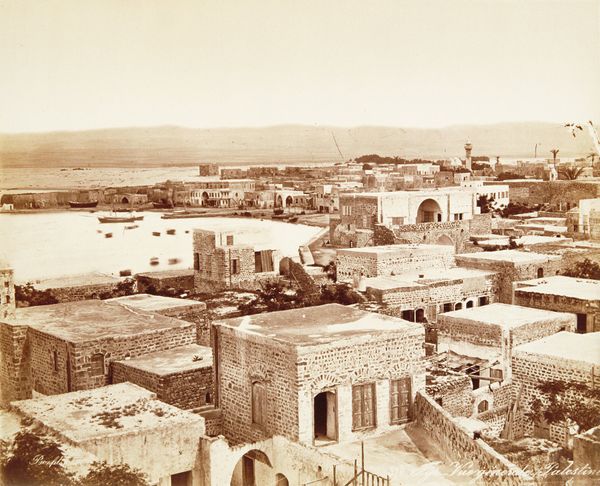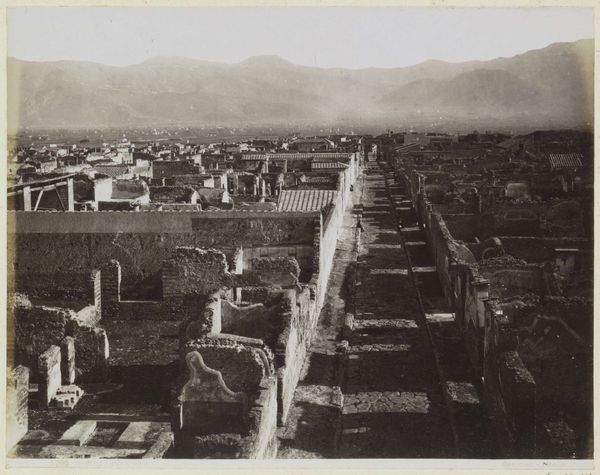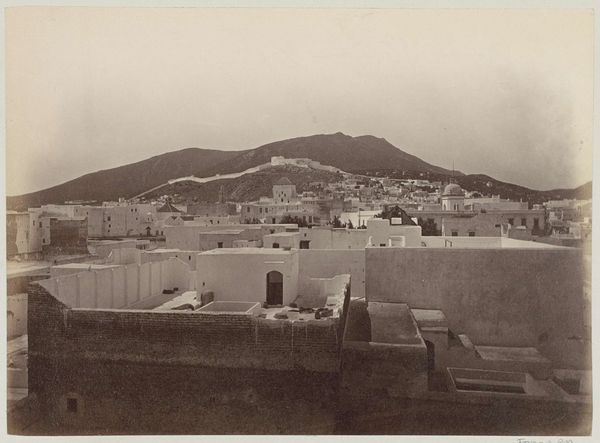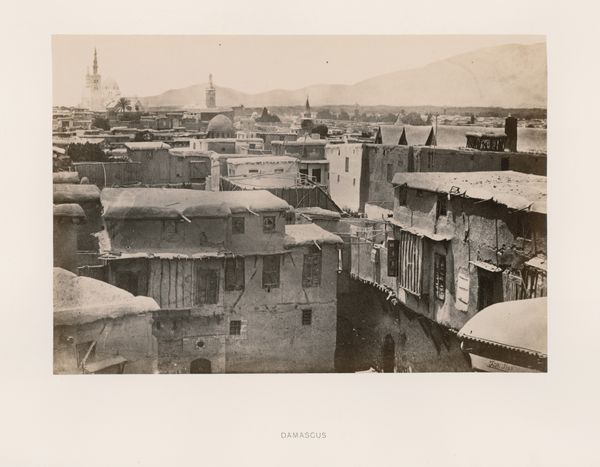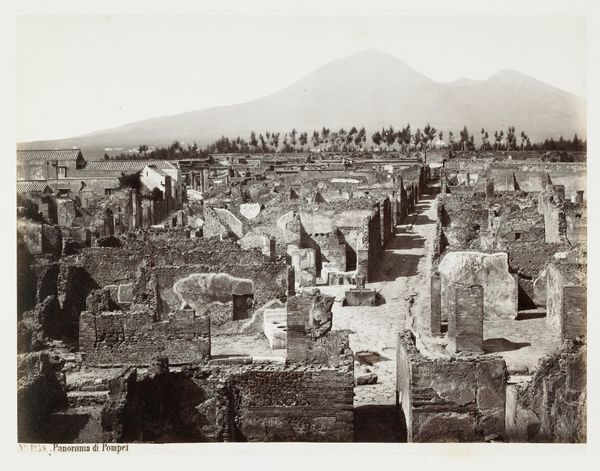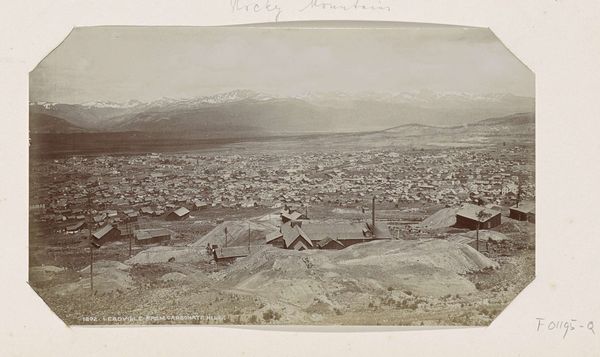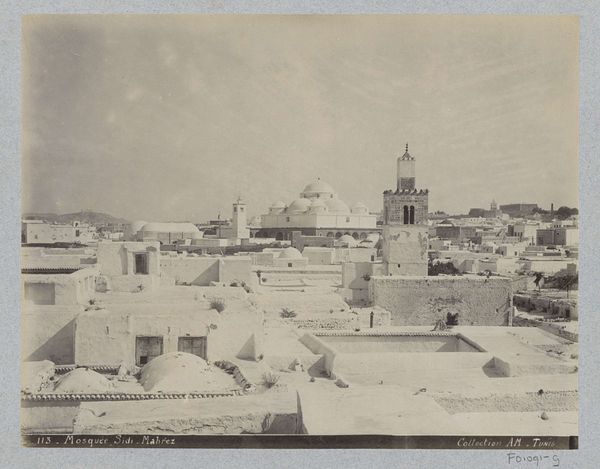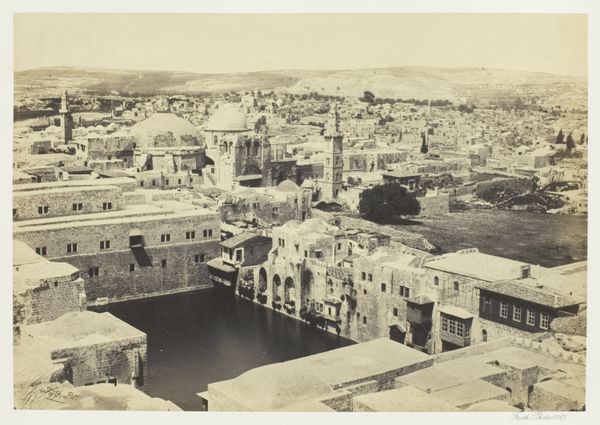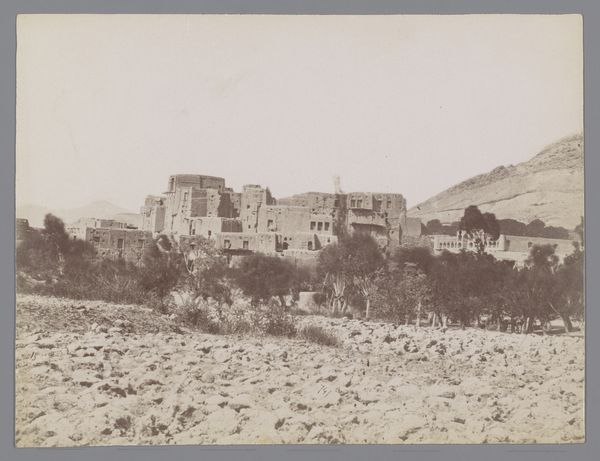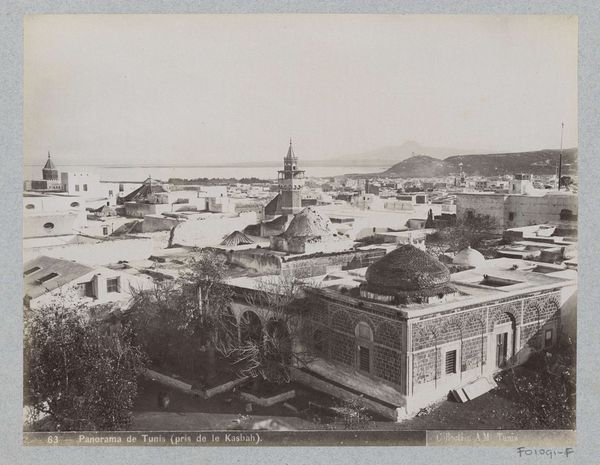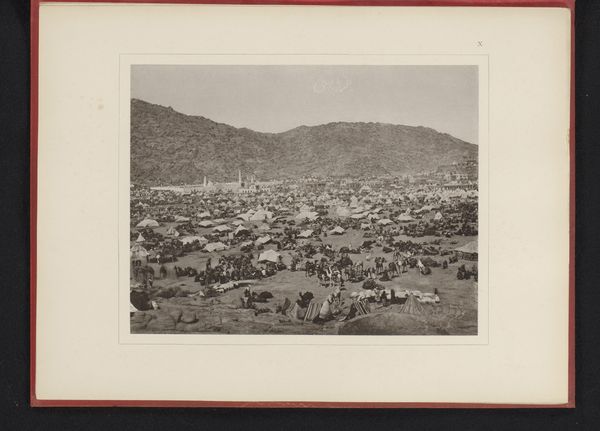
print, daguerreotype, photography, gelatin-silver-print
# print
#
landscape
#
daguerreotype
#
outdoor photograph
#
outdoor photo
#
outdoor photography
#
photography
#
outdoor scenery
#
mountain
#
orientalism
#
gelatin-silver-print
#
cityscape
Copyright: Public Domain
Editor: Francis Frith's "Damascus," taken in 1857, is a fascinating gelatin-silver print. The city sprawls under a rather imposing mountain. There's a documentary feel, but also, I find it quite romantic in its scale and sepia tones. What stands out to you when you look at this, Professor? Curator: What I see is the performance of empire, and the hunger for authenticity. Frith's choice to photograph Damascus wasn't accidental. It catered to a European audience hungry for images of the 'Orient'—a region then heavily romanticized and subjected to colonial ambitions. Editor: So, it's not just a pretty landscape? Curator: Absolutely not. Photography at this time was a relatively new medium, imbued with a sense of 'truth.' Frith and others capitalized on this belief, presenting a specific, often curated, view of the Middle East. Look at the angle; it emphasizes the vastness of the city, yet somehow feels devoid of human activity beyond the built structures. Doesn't that strike you as interesting? Editor: It does. It's almost… vacant. So, how does this play into the politics of the time? Curator: Well, these images were circulated widely in Europe, shaping public perception. By presenting a romanticized, often depopulated landscape, it reinforced the idea of European superiority and perhaps even a perceived need for intervention and "civilization". Essentially, the photograph becomes a tool for justifying colonial expansion. Editor: That's a pretty heavy concept. I never really considered the power that early photography held in shaping such broad opinions. Curator: Indeed. It's a stark reminder that art, even seemingly objective documentary photography, is always created within a specific social, political, and cultural context, and thus carries that baggage. It makes you think twice about seeing any art without questioning why and how it came to exist. Editor: Exactly. Thanks for shedding light on the cultural and historical layers of Frith’s “Damascus”. I definitely view this photograph through a different lens now.
Comments
No comments
Be the first to comment and join the conversation on the ultimate creative platform.
